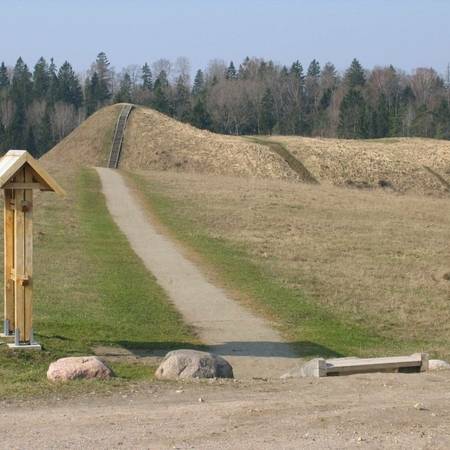The hillfort and its settlement were found on the left bank of the Dubysa river. It is also known as Pilale. The hillfort was of great importance in battles against the Crusaders. One of the most fortified castles in the region was there during the 13th century, and German chronicles make reference to the castle on the hill on several occasions. Presumably there was a wooden castle on the hillock, surrounded by a structured wall standing 5 or 6 m tall. Inside the wall were ladders which defenders could climb. It is thought that between 50 and 70 men were on duty to defend the building. The Dubysa castle was important in the broader system of fortifications in Northern Lithuania. In the summer of 1236, the Brethren of the Sword, after losing the Battle of Šiauliai, tried and failed to occupy the Dubysa castle. The active defence helped the noblemen at the Mūša River to pursue and destroy their enemies. In 1348, the Dubysa castle was burned down by a large army from the German Order. It was soon rebuilt, but in 1358 it was burned down once again. Between 1902 and 1911, the distinguished Polish archaeologist Liudvikas Kšivickas conducted digs at the site, finding numerous objects from the 11th to the 14th century – the iron tips of bows and crossbows, knives, keys, spindles, fragments of burned clay, as well as calcified wheat, barley, rye and millet. Several other archaeologists poked around in the region during the 2002, finding arrowheads, knives, rasps, remnants of fish scales, ceramics, as well as brass ornaments of various kinds that were typical among Semigallian tribes. The discoveries are housed at the Vytautas the Great War Museum and the “Aušros” museum in Šiauliai.

+2


.jpg)

Reviews